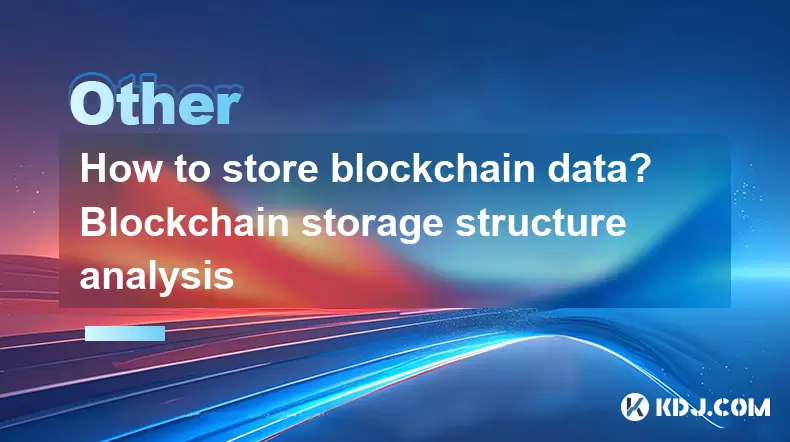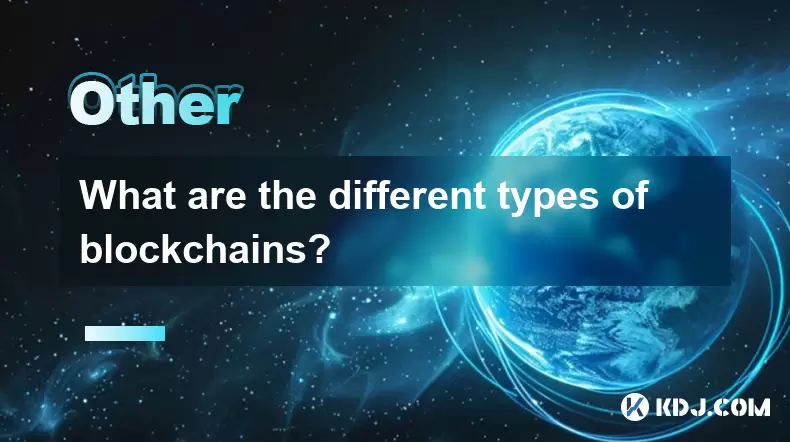-
 Bitcoin
Bitcoin $112400
-1.07% -
 Ethereum
Ethereum $3409
-3.27% -
 XRP
XRP $2.784
-6.60% -
 Tether USDt
Tether USDt $0.9997
-0.03% -
 BNB
BNB $739.3
-2.09% -
 Solana
Solana $158.0
-2.90% -
 USDC
USDC $0.9998
-0.02% -
 TRON
TRON $0.3213
-0.94% -
 Dogecoin
Dogecoin $0.1929
-5.01% -
 Cardano
Cardano $0.6974
-2.82% -
 Hyperliquid
Hyperliquid $36.69
-2.31% -
 Sui
Sui $3.327
-4.80% -
 Stellar
Stellar $0.3672
-5.18% -
 Chainlink
Chainlink $15.65
-3.07% -
 Bitcoin Cash
Bitcoin Cash $525.0
-1.68% -
 Hedera
Hedera $0.2291
-6.00% -
 Avalanche
Avalanche $20.91
-2.96% -
 Ethena USDe
Ethena USDe $1.000
0.00% -
 Toncoin
Toncoin $3.520
-1.12% -
 UNUS SED LEO
UNUS SED LEO $8.968
0.14% -
 Litecoin
Litecoin $105.7
0.26% -
 Shiba Inu
Shiba Inu $0.00001181
-1.79% -
 Polkadot
Polkadot $3.492
-2.08% -
 Uniswap
Uniswap $8.800
-3.10% -
 Dai
Dai $0.9999
-0.01% -
 Monero
Monero $289.9
-3.17% -
 Bitget Token
Bitget Token $4.243
-1.27% -
 Pepe
Pepe $0.00001006
-3.67% -
 Cronos
Cronos $0.1248
-5.68% -
 Aave
Aave $249.7
-2.50%
How to store blockchain data? Blockchain storage structure analysis
Blockchain data is stored across decentralized nodes, ensuring security and transparency through distributed ledgers and cryptographic linking of blocks.
Jun 14, 2025 at 11:57 pm

Understanding Blockchain Data Storage
Storing blockchain data is a critical aspect of maintaining the integrity and security of decentralized networks. Unlike traditional centralized databases, blockchain technology relies on a distributed ledger system where each participant (node) stores a copy of the entire blockchain or relevant parts of it. This structure ensures transparency, immutability, and fault tolerance.
Each block in the blockchain contains several key components: a header, transaction data, and a reference to the previous block through a cryptographic hash. The header includes metadata such as timestamp, nonce, and Merkle root, which collectively contribute to the secure linkage between blocks.
Types of Nodes and Their Role in Data Storage
In a blockchain network, nodes are responsible for validating transactions and storing data. There are primarily two types of nodes:
- Full Nodes: These store the complete history of the blockchain and independently verify every transaction without relying on other nodes. Running a full node requires significant storage capacity and computational resources.
- Light Nodes (or Lightweight Clients): These only store block headers and request necessary information from full nodes when needed. Light nodes are suitable for devices with limited resources like mobile phones.
The choice between running a full node or a light node depends on the user's need for decentralization and resource availability. Full nodes provide higher security and autonomy, while light nodes offer convenience at the cost of some trust assumptions.
Storage Mechanisms in Blockchain Architecture
Blockchain storage utilizes various structures to optimize efficiency and scalability. One of the most notable is the Merkle Tree, which organizes transaction data into a binary tree structure. Each leaf node contains a hash of individual transactions, while non-leaf nodes contain hashes of their child nodes. This allows for efficient and secure verification of large datasets.
Additionally, block headers are stored separately from transaction data, enabling faster synchronization and pruning capabilities. Some blockchains implement pruning mechanisms that allow nodes to delete old transaction data after verifying them, reducing storage requirements without compromising security.
Another emerging approach involves off-chain storage solutions, such as IPFS (InterPlanetary File System) or Filecoin, which complement on-chain data by storing large files off the main blockchain while referencing them via cryptographic pointers.
Practical Steps for Setting Up a Blockchain Node
Setting up a blockchain node requires careful planning and execution. Here’s a step-by-step guide:
- Choose the Type of Node: Decide whether you want to run a full node or a light node based on your hardware capabilities and intended use case.
- Download the Necessary Software: Obtain the official client software for the blockchain you’re interested in, such as Bitcoin Core, Geth for Ethereum, or similar clients for other chains.
- Allocate Sufficient Storage Space: Ensure your device has enough disk space. For example, the Bitcoin blockchain currently exceeds 400GB, while Ethereum’s blockchain can surpass 1TB depending on the mode used.
- Configure Network Settings: Open required ports on your firewall/router to allow incoming connections and ensure proper synchronization with peers.
- Start the Node and Wait for Sync: Launch the client and wait for the blockchain to fully synchronize. This process may take several hours or even days depending on your internet speed and hardware performance.
- Maintain and Monitor the Node: Regularly update the software, monitor logs, and ensure your node remains online to contribute effectively to the network.
Following these steps will help you successfully participate in the blockchain network and securely store its data.
Optimizing Blockchain Storage Efficiency
As blockchain networks grow, optimizing storage becomes increasingly important. Several strategies can be employed:
- Pruning: Many modern clients support pruning modes that automatically delete old transaction data once validated, significantly reducing disk usage.
- Compression Techniques: Implementing compression algorithms can reduce the size of stored data without affecting accessibility.
- Database Optimization: Choosing the right database backend (e.g., LevelDB, RocksDB) and tuning its parameters can enhance read/write performance and storage efficiency.
- Sharding: In more advanced implementations, especially in Layer 2 solutions or next-generation blockchains, sharding divides the blockchain into smaller segments, allowing nodes to store only a portion of the data.
These methods enable more efficient utilization of storage resources while preserving the core principles of decentralization and security.
Security Considerations in Blockchain Data Storage
Securing stored blockchain data is paramount. Unauthorized access or corruption of blockchain files can compromise the entire network. Key security practices include:
- Regular Backups: Maintain backups of your node’s wallet and configuration files to prevent data loss due to hardware failure or accidental deletion.
- Access Control: Restrict physical and digital access to the machine hosting the node. Use strong passwords and disable unnecessary services.
- Encryption: Encrypt sensitive data such as private keys and wallet files using robust encryption standards.
- Monitoring and Logging: Set up monitoring tools to detect unusual activity and log all events for auditing purposes.
Implementing these measures helps ensure the confidentiality, integrity, and availability of stored blockchain data.
Frequently Asked Questions
Q: Can I store blockchain data on external drives?
Yes, you can store blockchain data on external drives, but it must be connected during operation. Performance may vary depending on the drive’s speed and interface (e.g., USB 3.0 vs. SSD NVMe).
Q: What happens if my node stops synchronizing?
If your node stops syncing, it may fall behind the network. You’ll need to restart the client and check for connectivity issues, disk space, or corrupted files.
Q: How often should I update my node software?
You should update your node software regularly, especially when new consensus rules or security patches are released. Most clients notify users of available updates automatically.
Q: Is it possible to share blockchain storage among multiple devices?
Technically, yes, but it requires careful setup to avoid conflicts. You can use shared file systems or network-attached storage (NAS), though this may introduce latency and synchronization challenges.
Disclaimer:info@kdj.com
The information provided is not trading advice. kdj.com does not assume any responsibility for any investments made based on the information provided in this article. Cryptocurrencies are highly volatile and it is highly recommended that you invest with caution after thorough research!
If you believe that the content used on this website infringes your copyright, please contact us immediately (info@kdj.com) and we will delete it promptly.
- BlockDAG, SEI, Ethena: Top Crypto Performers Under the Microscope
- 2025-08-03 10:50:16
- Bitcoin Blasts Past $119K: How Institutional Adoption and Macro Shifts Fuel the Fire
- 2025-08-03 10:55:16
- Crypto, Grok, and August: Decoding the Latest Trends and Insights
- 2025-08-03 11:10:16
- Crypto, Phishing, and Your Wallet: A New Yorker's Guide to Staying Safe
- 2025-08-03 10:30:16
- Troller Cat Meme Coin Presale Soars: A New King in the Crypto Jungle?
- 2025-08-03 10:30:16
- Grayscale, Altcoin Trust, and Mid-Cap Mania: What's the Deal?
- 2025-08-03 08:50:16
Related knowledge

What is the difference between on-chain and off-chain transactions?
Aug 02,2025 at 04:22pm
Understanding On-Chain TransactionsOn-chain transactions refer to digital asset transfers that are recorded directly on a blockchain ledger. These tra...

What is the double-spending problem and how does blockchain prevent it?
Aug 02,2025 at 01:07pm
Understanding the Double-Spending ProblemThe double-spending problem is a fundamental challenge in digital currency systems where the same digital tok...

What is the difference between a blockchain and a database?
Aug 01,2025 at 09:36pm
Understanding the Core Structure of a BlockchainA blockchain is a decentralized digital ledger that records data in a series of immutable blocks linke...

How does blockchain handle scalability?
Aug 02,2025 at 02:58pm
Understanding Blockchain Scalability ChallengesBlockchain scalability refers to a network's ability to handle an increasing volume of transactions wit...

What are the different types of blockchains?
Aug 03,2025 at 03:01am
Public Blockchains: Open and Decentralized NetworksPublic blockchains are the most widely recognized type of blockchain, characterized by their open a...

What is a hash in a blockchain?
Aug 02,2025 at 05:28am
Understanding the Concept of Hash in BlockchainA hash in the context of blockchain technology refers to a unique digital fingerprint generated by a cr...

What is the difference between on-chain and off-chain transactions?
Aug 02,2025 at 04:22pm
Understanding On-Chain TransactionsOn-chain transactions refer to digital asset transfers that are recorded directly on a blockchain ledger. These tra...

What is the double-spending problem and how does blockchain prevent it?
Aug 02,2025 at 01:07pm
Understanding the Double-Spending ProblemThe double-spending problem is a fundamental challenge in digital currency systems where the same digital tok...

What is the difference between a blockchain and a database?
Aug 01,2025 at 09:36pm
Understanding the Core Structure of a BlockchainA blockchain is a decentralized digital ledger that records data in a series of immutable blocks linke...

How does blockchain handle scalability?
Aug 02,2025 at 02:58pm
Understanding Blockchain Scalability ChallengesBlockchain scalability refers to a network's ability to handle an increasing volume of transactions wit...

What are the different types of blockchains?
Aug 03,2025 at 03:01am
Public Blockchains: Open and Decentralized NetworksPublic blockchains are the most widely recognized type of blockchain, characterized by their open a...

What is a hash in a blockchain?
Aug 02,2025 at 05:28am
Understanding the Concept of Hash in BlockchainA hash in the context of blockchain technology refers to a unique digital fingerprint generated by a cr...
See all articles

























































































